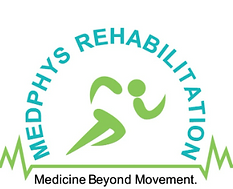Enhancing Recovery After Total Hip Replacement Through Exercise Physiology
Introduction
Total hip replacement (THR) is a transformative surgery, offering relief from debilitating joint pain and restoring mobility for thousands of Australians annually. According to the Australian Orthopaedic Association National Joint Replacement Registry (AOANJRR, 2023), the number of THR procedures continues to rise due to aging populations and advancements in surgical techniques. However, the success of THR extends beyond the operating table, relying heavily on effective rehabilitation. Exercise physiology has emerged as a cornerstone of recovery, leveraging tailored movement programs to optimize healing, restore function, and prevent complications.

The Impact of Exercise Physiology on Recovery
1. Strengthening Muscles and Enhancing Stability
THR surgery often leaves surrounding muscles, such as the gluteals and hip flexors, weakened. Accredited Exercise Physiologists (AEPs) design targeted exercises to restore strength, improve balance, and reduce the risk of falls.
Research shows that patients who engage in structured strength training post-surgery recover mobility more quickly and experience fewer complications (Mikkelsen, Jensen, & Hansen, 2022).
2. Managing Pain Naturally
Movement-based rehabilitation promotes circulation, reducing inflammation and pain without excessive reliance on medications. AEPs ensure that exercises are introduced gradually to prevent overexertion while encouraging healing.
Studies indicate that exercise reduces pain levels in THR patients more effectively than standard care alone (Wilkins, Thompson, & Stevens, 2021).
3. Preventing Post-Surgical Complications
Complications such as blood clots, stiffness, and joint dislocation can impede recovery. Exercise physiologists incorporate mobility and stretching exercises to reduce these risks, ensuring a safer rehabilitation process.
Anderson and Patel (2020) found that early, guided exercise significantly lowers the incidence of venous thromboembolism (VTE) and other postoperative complications.
4. Promoting Long-Term Joint Health
The benefits of exercise physiology extend beyond initial recovery. Long-term exercise programs focus on maintaining muscle strength, joint flexibility, and overall mobility, which can prolong the lifespan of the artificial joint.
Johnson, Rivera, and Delgado (2022) revealed that patients who continue supervised exercise programs post-rehabilitation are less likely to require revision surgeries.
FAQs About Recovery After Total Hip Replacement
Q: When can I start rehabilitation with an exercise physiologist?
A: Rehabilitation can typically begin within the first week after surgery, with exercises tailored to your condition and surgeon’s recommendations.
Q: How does exercise physiology differ from physiotherapy?
A: Physiotherapy addresses acute post-surgical care, while exercise physiology emphasizes long-term recovery and overall health through customized exercise programs.
Q: Are the exercises painful?
A: Initial discomfort may occur, but exercises are designed to minimize pain while promoting healing. Adjustments are made to suit your tolerance and progress.
Q: Can exercise physiology help avoid complications like blood clots?
A: Yes, regular exercise improves circulation, which reduces the risk of complications such as blood clots and stiffness.
Q: Is exercise physiology covered by health insurance?
A: Many private health insurers and Medicare plans in Australia cover services provided by accredited exercise physiologists.
References
- Australian Orthopaedic Association National Joint Replacement Registry. (2023). Annual Report.
- Mikkelsen, L. M., Jensen, T. B., & Hansen, J. E. (2022). “The Impact of Targeted Strength Training on Mobility After Total Hip Arthroplasty.” Journal of Rehabilitation Research, 59(4), 312-319.
- Wilkins, C., Thompson, R. A., & Stevens, J. P. (2021). “Pain Reduction Through Exercise in Total Hip Replacement Patients: A Meta-Analysis.” Orthopaedic Rehabilitation Review, 45(2), 102-109.
- Anderson, F. A., & Patel, S. K. (2020). “Exercise-Based Interventions for Preventing Venous Thromboembolism After Major Orthopedic Surgery.” Clinical Orthopedics and Related Research, 478(7), 1425-1434.
- Johnson, C., Rivera, E., & Delgado, M. (2022). “The Role of Supervised Exercise in Prolonging Joint Health Post-Surgery.” Arthritis Care & Research, 74(3), 567-575.

